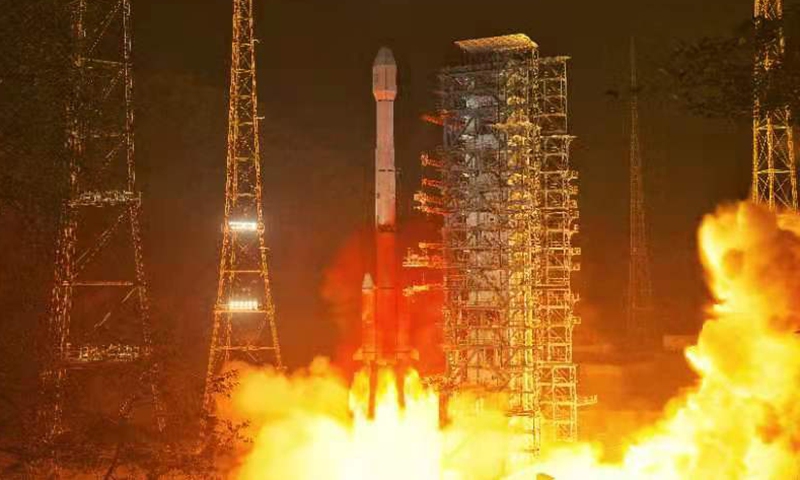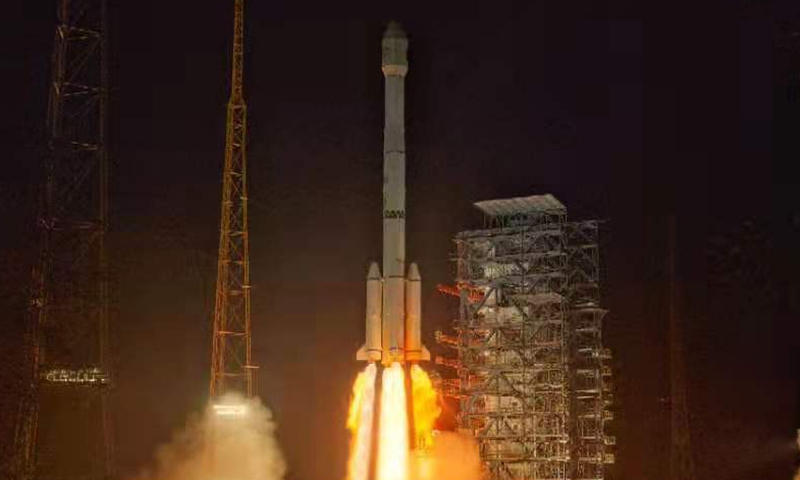China successfully launches new meteorological satellite, further boosts disaster event observation and response capability

Photo:Guo Wenbin
China successfully launched the Fengyun-4B, the first operational satellite of a new generation of meteorological satellites in the geostationary orbit, via a Long March-3B carrier rocket from the Xichang Satellite Launch Center at 12:17 am Thursday in Southwest China's Sichuan Province, according to the China National Space Administration (CNSA).
It will work together and construct a network with Fengyun-4A, in orbit to further strengthen China's observation and response capability of small and medium scale disaster events and provide information security services for a range of sectors including meteorological, agricultural, aviation, marine and environmental protection, the CNSA said in a press release it sent to the Global Times.
The network will also be able to conduct dynamic monitoring and tracking of a variety of disaster elements including floods, cold fronts, droughts and sand storms. Its observation range covers Asia, the central Pacific Ocean and Indian Ocean regions, so that the network will also greatly improve China's forecast accuracy of disaster weather including typhoons and storms, CNSA said.

Photo:Guo Wenbin
It is equipped with a rapid imager, improving measurement resolution to 250 meters from the geostationary orbit [which is the highest in the world,] and accelerating scan imaging of the Earth.
Fengyun-4A, the scientific experiment satellite for the network, was launched on December 11, 2016.
According to the operator of the system, the China Meteorological Administration (CMA), there are eight satellites of the Fengyun family currently in orbit, and a total of 18 Fengyun satellites have been deployed.
The Fengyun satellite family has provided services for 118 countries and regions including 83 along the China-proposed Belt and Road Initiative, according to the CMA.
The Thursday mission also marked the 372nd flight of Long March rocket series. The China Academy of Launch Vehicle Technology (CALT), the developer of the Long March 3B, told the Global Times on Thursday that it would also kickstart a new round of intense launch schedules for the Long March 3A family.
The "Gold Medal Rocket" series will carry out 10 launches over seven months, at intervals of at least half a month, the academy said.


